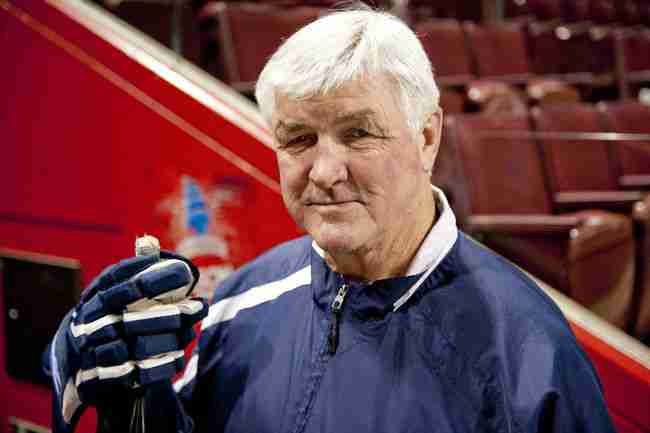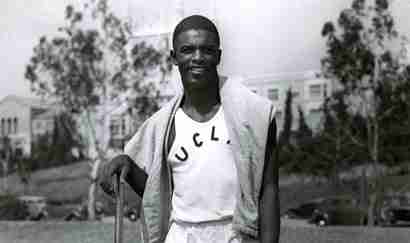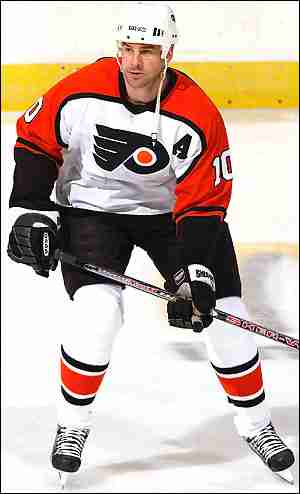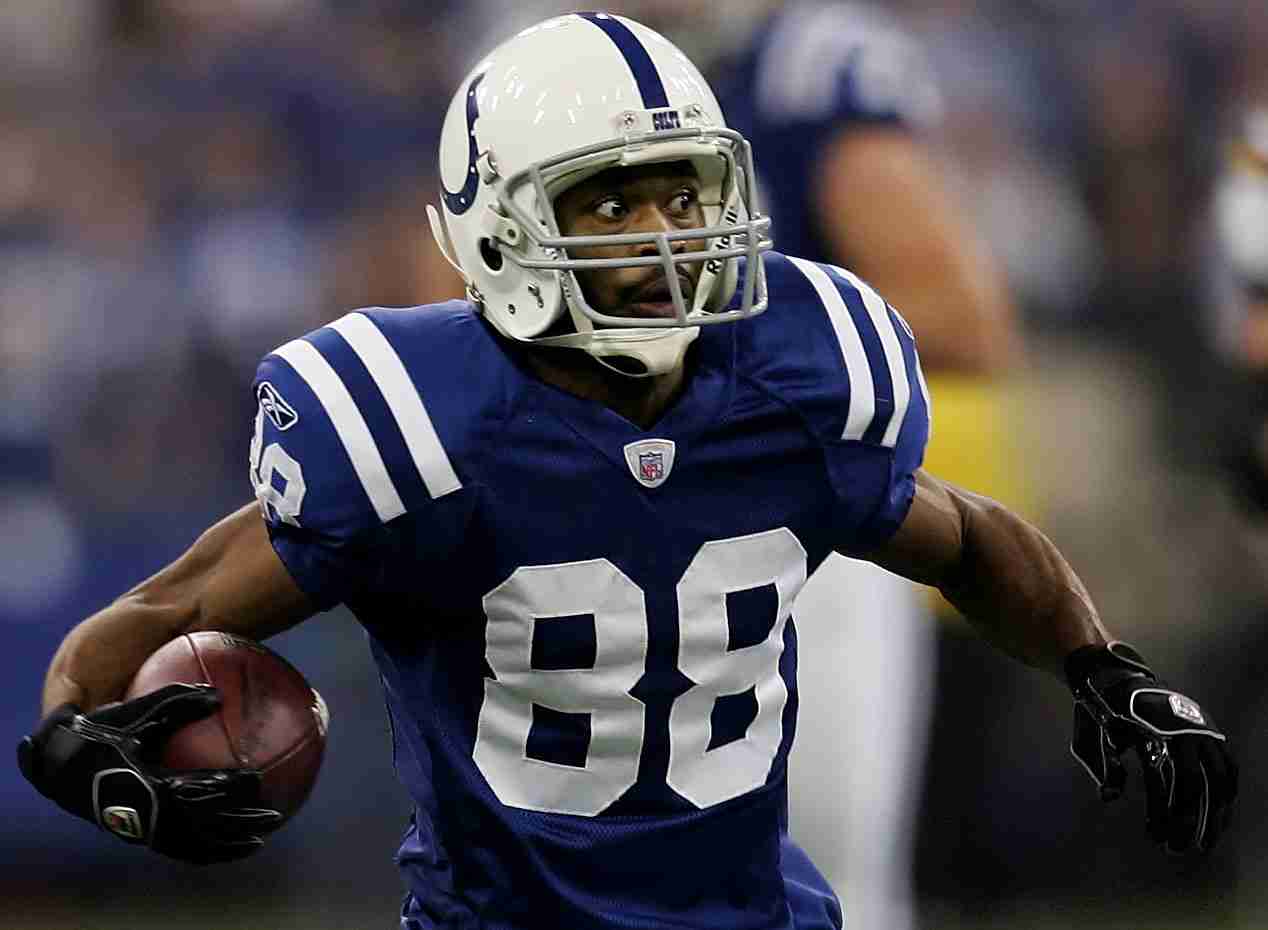
Committee Chairman
Kirk Buchner, "The Committee Chairman", is the owner and operator of the site. Kirk can be contacted at [email protected] .
RIP: Pat Quinn and Viktor Tikhonov
Nov 25, 2014
Published in
Not in Hall of Fame News

It is a sad day in the world of hockey as both Pat Quinn and Viktor Tikhonov passed away today, both legends in the world of coaching the game of hockey.
Pat Quinn carved a decent niche in the National Hockey League where he played nine seasons on the blue line for the Toronto Maple Leafs, Vancouver Canucks and Atlanta Flames, but it was behind the bench where he would gain his greatest fame.
The year after he retired as a player, Quinn would become an assistant coach for future Hall of Fame coach, Fred Shero in Philadelphia. And the following season he would gain his first head coaching gig on the professional level, helming the Flyers minor league affiliate, the Maine Mariners, though that would be short lived as he would be called up to take over the reigns of the main club. In his first full season with the Philadelphia Flyers (1979-80), Pat Quinn would oversee a team that had a thirty-five game unbeaten streak, a record at the time. The New York Islanders in the Stanley Cup Finals would upset the Flyers, but Quinn would win the Jack Adams Trophy as the Head Coach of the Year.
He would be fired in 1982 by Philadelphia but any former Coach of the Year is always on the market. He was snatched by the Los Angeles Kings and helped them improve but in what Quinn viewed as a lapse of contract (claiming L.A. did not pick up the contract), he signed with the Vancouver Canucks to take over as their Head Coach and General Manager in early 1986.
The NHL President, John Ziegler, citing tampering ruled that Quinn could not coach again until 1991 and that he could not take over as the Canucks President and GM until June and as a Vancouver executive and his biggest splash was securing Pavel Bure in the NHL Draft. Once his suspension from coaching was lifted he took over as the Canucks Head Coach and won another Jack Adams Award (1992) and took Vancouver to the Stanley Cup Finals in 1994. Following that, Pat Quinn would step down as Head Coach and focus on only administration but a falling out with ownership led to his dismissal, though the Mecca of Professional Hockey was waiting in open arms.
Joining the Toronto Maple Leafs in 1998, he guided the squad to continued improvement and took them to the Conference Finals in 2002, which has been the best showing in Toronto in the last forty-five years. Again, upper management would force him out, but he was the active Head Coach with the most wins by far before he was forced out.
Jack Adams trophies and Stanley Cup appearances are nice, but it is never the same as accruing a championship. Quinn did win the big one, and many hockey fans in Canada would say the biggest one ever, when he was the Head Coach of Team Canada in the 2002 Olympics in Salt Lake City, the first Canadian team to win the Gold Medal in 50 years. Quinn would repeat it again on the International level by taking the Canadians to a win the World Cup of Hockey in 2004.
Overall Pat Quinn had a 684-524-154-34 coaching record in the NHL, and was the Chairman of the Hockey Hall of Fame induction committee at the time of his death. He died at the age of 71 due to respiratory illness.
Like Pat Quinn, Viktor Tikhonov was a defenceman in his playing days, but it was a Head Coach that gained him his greatest fame. After a lengthy stint of coaching the Dynamo Riga in the Soviet League, Tikhonov would take over the coaching duties of the CKSA Moscow and the Soviet National Team in 1978.
He was known for a heavy disciplined style, and was a complete authoritarian; a general himself in the Soviet Army. American fans know him mostly for his loss at the 1980 “Miracle on Ice” to the United States, but that was a rare loss for Tikhonov who would win the Olympic Gold in 1984, 1988 and 1982, and helmed the Soviets to a huge International win at the 1981 Canada Cup tournament. He would also win the Soviet league championship twelve straight times and is a member of the International Ice Hockey Federation Hall of Fame.
He was 84 years old.
We here at Notinhalloffame.com would like to offer our condolences to the friends and family of both Pat Quinn and Viktor Tikhonov at this time.
UCLA retires number 42 across the board
Nov 24, 2014
Published in
Not in Hall of Fame News

Major League Baseball unilaterally retired the number 42 in honor of Jackie Robinson, who broke the color barrier in 1947. His alma mater, UCLA has announced that the number 42 will be retired in all aspects of athletics in honor of the 75th anniversary of when he first set foot on campus.
At UCLA, Robinson became the school’s first four letter athlete. He played on the backfield of the UCLA Football team, making the Bruins team one of the first few integrated teams in the College Football. He was also a member of the Men’s Basketball team, the Baseball (of course) team and made his biggest mark in Track and Field, where he won the NCAA Long Jump at the National Track and Field Championships in 1940.
Those currently wearing 42 will be able to keep that number for the duration of their career in UCLA. We would like to commend the institution for this classy move and once again salute the great career of Jackie Robinson.
Eric Lindros, John LeClair to the Flyers HOF
Nov 23, 2014
Published in
Not in Hall of Fame News

The Hockey Hall of Fame may be snubbing Eric Lindros, but the Philadelphia Flyers have welcomed #88 back into the fold where he has entered the team’s Hall of Fame. Lindros is not alone in this year’s class as his long time line mate in Philadelphia, John LeClair, joined him.
After refusing to suit for the Quebec Nordiques, who drafted him first overall in 1991, Quebec engineered a blockbuster trade the year after that sent the former Oshawa General to the Philadelphia Flyers. Lindros with his large size and physical style, would emerge as the NHL’s top power forward. In the strike shortened 1994-95 season, Lindros would win the Hart Trophy as the NHL’s best player, a trophy he was expected to win many more times.
That didn’t happen, but in the 486 Games he played in Philadelphia he scored 659 Points giving him a 1.36 Points per Game Average. Philadelphia went to 1997 Stanley Cup Finals, and though the Flyers did not win the Cup, Lindros emerged as the leading scorer in the Playoffs.
Lindros’ style of play netted him a lot of injuries and the way they were handled by the Flyers would eventually lead to an acrimonious departure. Bobby Clarke, the Flyers General Manager openly questioned the toughness of his star player and a battle between the two escalated in the media. Lindros’ suffered through concussions, an issue we are far more educated about these days and after his disillusion with the Flyers’ medical team and management he sat out the 2000-01 season, before he was finally traded to the New York Rangers.
Lindros’ may have left the Flyers on bad terms, but as time often does, it heals wounds, and this was the team that he had his greatest impact in the National Hockey League, and he belongs in this Hall of Fame.
John LeClair was already proving himself to be a bona fide NHL star before he arrived in Philadelphia. LeClair was a member of the 1993 Stanley Cup Championship team in Montreal where the netted two of the overtime goals in the Finals. As proficient as he was becoming in Montreal, he would be part of a blockbuster trade of his own and join Philadelphia early in the 1994/95 season where he would enjoy his greatest stretch statistically.
Now on a line with Eric Lindros (a line that also included Mikael Renberg and was called the “Legion of Doom”) LeClair would earn his first First Team All Star selection in the strike shortened 1994-95 season and over the next four seasons would make the Post Season All Star team again with another First Team and three Second Teams nods. He would also make history as the first American born player to score 50 Goals in a season three consecutive times.
Overall as a member of the Philadelphia Flyers, John LeClair would have 643 Points in 649 Games and a Plus/Minus of 197.
We would like to congratulate both Eric Lindros and John LeClair for entering what we feel is a prestigious franchise Hall of Fame.
Pro Football HOF Semi-Finalists are out!
Nov 21, 2014
Published in
Not in Hall of Fame News

The Pro Football Hall of Fame has announced their 2015 Semi-Finalists and as usual, there is nothing shocking about the list. Regular visitors to our website know how much respect we have for their Hall of Fame and how we have patterned our Fictitious Athlete and Fictitious Rock and Roll Hall of Fame on their voting schedule.
The semi-finalists are listed below in the order of their rank on our Notinhalloffame.com Football List:
Junior Seau: Ranked #1 on Notinhalloffame.com. Linebacker. Chargers 1990-2002, Dolphins 2003-05, Dolphins 2006-09. 6 First Team All Pro Selections, 12 Pro Bowls, 1990’s All Decade Team, UPI & NEA Defensive Player of the Year (1992), NFL Alumni Linebacker of the Year (2003), Walter Payton Man of the Year (1994). 268 Games Played, 234 Games Started, 1,522 Solo Tackles, 56.5 Quarterback Sacks, 18 Interceptions. This is Seau’s first year of eligibility.
Marvin Harrison: Ranked #3 on Notinhalloffame.com. Wide Receiver. Colts 1996-2008. Super Bowl Champion (XLI with Indianapolis) 3 First Team All Pro Selections, 8 Pro Bowls, 2 Reception Titles (2000 & 2002), 2 Receiving Yards Titles (1999-2002), NFL Alumni Wide Receiver of the Year (2002). 190 Games Played, 188 Games Started, 1,102 Receptions, 14,580 Receiving Yards, 128 Touchdowns. This is Harrison’s second year of eligibility, and he was a Finalist last year.
Will Shields: Ranked #7 on Notinhalloffame.com. Offensive Guard. Chiefs 1993-2006. 2 First Team All Pro Selections, 12 Pro Bowls, Walter Payton Man of the Year (2003), Ed Block Courage Award (2005). 224 Games Played, 215 Games Started. This is Shields’ fourth year of eligibility, and he was a Finalist in 2012, 2013 and 2014.
Torry Holt: Ranked #8 on Notinhalloffame.com. Wide Receiver. Rams 1999-2008, Jaguars 2009. Super Bowl Champion (XXXIV with St. Louis), 1 First Team All Pro Selection, 7 Pro Bowls, 1 Receptions Title, 2 Receiving Yards Title, 1 Yards per Reception Title, 2000’s All Decade Team, NFL Alumni Wide Receiver of the Year (2003). 173 Games Played, 158 Games Started, 920 Receptions, 13,382 Receiving Yards, 74 Touchdowns. This is Holt’s first year of eligibility.
Charles Haley: Ranked #10 on Notinhalloffame.com. Defensive End/Linebacker. 49ers 1986-91, Cowboys 1992-96, 49ers 1998-99. Five time Super Bowl Champion (XXIII & XXIV with San Francisco & XXVII, XXVIII & XXX with Dallas), 2 First Team All Pro Selection, 5 Pro Bowls. 169 Games, 120 Games Started, 100.5 Quarterback Sacks, 485 Solo Tackles. This is Haley’s tenth year of eligibility and he was a Finalist in 2010, 2011, 2012, 2013 & 2014.
Roger Craig: Ranked #11 on Notinhalloffame.com. Running Back. 49ers 1983-90, Raiders 1991, Vikings 1992-93. Three time Super Bowl Champion (XIX, XXIII & XXIV with San Francisco), 1 First Team All Pro Selection, 4 Pro Bowls, AP NFL Player of the Year (1988), 1980’s All Decade Team. 165 Games Played, 133 Games Started, 8,189 Rushing Yards, 56 Rushing Touchdowns, 566 Receptions, 4,911 Receiving Yards, 17 Receiving Touchdowns. This is Craig’s fifteenth year of eligibility and he was a Finalist once in 2010.
Tim Brown: Ranked #12 on Notinhalloffame.com. Wide Receiver/Kickoff and Punt Returner. Raiders 1988-2003, Buccaneers 2004. 9 Pro Bowls, 1990’s All Decade Team, 1 Receptions Title, 1 Kickoff Return Yards Title, 1 Punt Return Yards Title. 255 Games, 193 Games Started, 1,094 Receptions, 1,494 Receiving Yards, 100 Receiving Touchdowns, 3,320 Punt Return Yards, 1,235 Kickoff Return Yards, 4 Return Touchdowns. This is Brown’s sixth year of eligibility and has been a Finalist in all five previous years.
Kevin Mawae: Ranked #15 on Notinhalloffame.com. Center. Seahawks 1994-97, Jets 1998-2005, Titans 2006-09. 3 First Team All Pro Selections, 8 Pro Bowls, 2000’s All Decade Team, Ed Block Courage Award (2009). 241 Games Played, 232 Games Started. This is Mawae’s first year of eligibility.
Jerome Bettis: Ranked #16 on Notinhalloffame.com. Running Back. Rams 1993-95, Steelers 1996-2005. Super Bowl Champion (XL with Pittsburgh), 2 First Team All Pro Selections, 6 Pro Bowls, AP Rookie of the Year (1993), AP Comeback Player of the Year (1996), NFL Alumni Running Back of the Year (1996), Walter Payton Man of the Year (2001). 13,362 Rushing Yards, 91 Touchdowns, 1,449 Receiving Yards, 3 Receiving Touchdowns. This is Bettis’ fifth year of eligibility and he has been a Finalist every year.
Orlando Pace: Ranked #18 on Notinhalloffame.com. Offensive Tackle. Rams 1997-2008, Bears 2009. Super Bowl Champion (XXXIV with St. Louis), 3 First Team All Pro Selections, 7 Pro Bowls, 2000’s All Decade Team, Ed Block Courage Award (2008). 169 Games Played, 161 Games Started. This is Pace’s first year of eligibility.
Edgerrin James: Ranked #19 on Notinhalloffame.com. Running Back. Colts 1999-2005, Cardinals 2006-08, Seahawks 2009. 1 First Team All Pro Selection, 4 Pro Bowls, 2 Rushing Titles, 2000’s All Decade Team, AP & PFWA Rookie of the Year. 148 Games Played, 135 Games Started, 12,246 Rushing Yards, 80 Rushing Touchdowns, 3,364 Receiving Yards, 11 Receiving Touchdowns. This is James’ first year of eligibility.
Isaac Bruce: Ranked #22 on Notinhalloffame.com. Wide Receiver. Rams 1994-2007, 49ers 2008-09. Super Bowl Champion (XXXIV with St. Louis), 4 Pro Bowls, 1 Receiving Yards Title. 223 Games Played, 193 Games Started, 1,024 Receptions, 15,208 Receiving Yards, 91 Receiving Touchdowns. This is Bruce’s first year of eligibility.
Steve Atwater: Ranked #23 on Notinhalloffame.com. Safety. Broncos 1989-98, Jets 1999. 2 Time Super Bowl Champion (XXXII & XXXIII with Denver), 2 First Team All Pro Selections, 8 Pro Bowls, 1990’s All Decade Team. 167 Games Played, 166 Games Started, 24 Interceptions. This is Atwater’s eleventh year of eligibility and he was a Semi-Finalist the last three years.
Terrell Davis: Ranked #24 on Notinhalloffame.com. Running Back. Broncos 1995-2001. 2 Time Super Bowl Champion (XXXII & XXXIII with Denver), 3 First Team All Pro Selections, 3 Pro Bowls, AP NFL MVP (1998), 2 Time AP Offensive Player of the Year (1996 & 1998), Super Bowl XXXII MVP, 1990’s All Decade Team, 1 Rushing Title, 1 Rushing Touchdown Title. 78 Games, 75 Games Started, 7,607 Rushing Yards, 60 Rushing Touchdowns, 1,280 Receiving Yards, 5 Receiving Touchdowns. This is Davis’ ninth year of eligibility and he has been a Semi-Finalist in all eight previous years.
Kurt Warner: Ranked #31 on Notinhalloffame.com. Quarterback. Rams 1998-2003, Giants 2004, Cardinals 2005-09. Super Bowl Champion (XXXIV with St. Louis), 2 First Team All Pro Selections, 4 Pro Bowls, 2 Time AP MVP (1999 & 2001), 2 Time NEA MVP (1999 & 2001), PFWA MVP (1999), Bert Bell Award (1999) Super Bowl XXXIV MVP, 1 Passes Completed Title, 3 Pass Completion Percentage Titles, 1 Passing Yards Title, 2 Passing Touchdowns Titles, 2 Quarterback Rating Titles. 32,334 Passing Yards, 201 Passing Touchdowns This is Warner’s first year of eligibility.
Kevin Greene: Ranked #43 on Notinhalloffame.com. Defensive End/Linebacker. Rams 1985-92, Steelers 1993-95, Panthers 1996, 49ers 1997, Panthers 1998-99. 3 First Team All Pro Selections, 5 Pro Bowls, NEA Defensive Player of the Year (1996), 1990’s All Decade Team, 2 Time Quarterback Sack Titles. 228 Games Played, 176 Games Started, 160 Quarterback Sacks, 669 Solo Tackles. This is Greene’s eleventh year of eligibility and he has been a Finalist the last three years.
John Lynch: Ranked #61 on Notinhalloffame.com. Safety. Buccaneers 1993-2003, Broncos 2004-07. Super Bowl Champion (XXXVII with Tampa Bay), 2 First Team All Pro Selections, 9 Pro Bowls, NFL Defensive Back of the Year (2000). 224 Games Played, 182 Games Started, 26 Interceptions, 13 Quarterback Sacks. This is Lynch’s third year of eligibility and was a Finalist last year.
Joe Jacoby: Ranked #66 on Notinhalloffame.com. Offensive Tackle. Redskins 1981-93. Three Time Super Bowl Champion (XVII, XXII & XXVI with Washington), 2 First Team All Pro Selections, 4 Pro Bowls, 1980’s All Decade Team. 170 Games Played, 148 Games Started. This is Jacoby’s seventeenth year of eligibility and he has been a Semi-Finalist four times.
Ty Law: Ranked #68 on Notinhalloffame.com. Cornerback. Patriots 1995-2004, Jets 2005, Chiefs 2006-07, Jets 2008, Broncos 2009. Three Time Super Bow Champion (XXXVI, XXXVII & XXXIX with New England), 2 First Team All Pro Selections, 5 Pro Bowls, 2 Time NFL Alumni Defensive Back of the Year (1998 & 2003) 2 Interception Titles (1998 & 2005). 203 Games Started, 185 Games Started, 53 Interceptions, 828 Interception Return Yards, 7 Interception Return Touchdowns. This is Law’s first year of eligibility.
Karl Mecklenburg: Ranked #69 on Notinhalloffame.com. Linebacker. Broncos 1983-94. 3 First Team All Pro Selections, 6 Pro Bowls. 180 Games Played, 141 Games Started, 79.5 Quarterback Sacks. This is Mecklenburg’s sixteenth year of eligibility and he has been a Semi-Finalist the last three years.
Morten Andersen: Ranked #88 on Notinhalloffame.com. Place Kicker. Saints 1982-94, Falcons 1995-2000, Giants 2001, Chiefs 2002-03, Vikings 2004, Falcons 2006-07. 3 First Team All Pro Teams, 7 Pro Bowls, 2 PFW Golden Toe Awards (1986 & 1995), 1980’s & 1990’s All Decade Team, 1 Field Goal Percentage Title. 388 Games Played, 565 Field Goals Made, 849 Extra Points Made. This is Andersen’s third year of eligibility and he was a Finalist last year.
Mike Kenn: Unranked at Notinhalloffame.com. Offensive Tackle. Falcons 1978-94. 2 First Team All Pro Selections, 5 Pro Bowls. 251 Games Played, 251 Games Started. This is Kenn’s fifteenth year of eligibility and this is the first time he has made the Semi Finals.
Darren Woodson: Unranked at Notinhalloffame.com. Safety. Cowboys 1992-2004. Three time Super Bowl Champion (XXVII, XXVIII & XXX with Dallas) 3 First Team All Pro Selections, 5 Pro Bowls, Ed Block Courage Award (1998). 178 Games Played, 159 Games Started, 23 Interceptions, 11 Quarterback Sacks. This is Woodson’s sixth year of eligibility and this is the first time he has made it to the Semi-Finals.
The following three Coaches have also been named Semi-Finalists. Currently, Notinhalloffame.com does not rank Coaches on our list.
Don Coryell: Head Coach. Cardinals 1973-77, Chargers 1978-86. 114-89-1 Record. Coryell was a Finalist in 2010.
Tony Dungy: Head Coach. Buccaneers 1996-2001, Colts 2002-08. Super Bowl Champion (XLI with Indianapolis), 2000’s All Decade Team, 139-69 Record. Dungy was a Finalist last year.
Jimmy Johnson: Head Coach. Cowboys 1989-93, Dolphins 1996-99. 2 Time Super Bowl Champion (XXVII & XXVIII with Dallas), 89-68 Record.
The mild surprise (in our eyes anyway) of Woodson and Kenn to the Semi Finalist list tells us that our 2015 plan of expanding to 250 candidates to allow all of you to give us additional perspective is the correct one.
The only Semi-Finalist from last year who did not return to this level was Steve Wisniewski, who we have ranked at #28.
The reduction of the final fifteen Modern Era candidates will be announced on January 8, 2015.
Those fifteen will join Mick Tingelhoff, who was announced as this year’s lone Senior Candidate. Tingelhoff was ranked at 25 by Notinhalloffame.com. Tingelhoff automatically advanced to the Finals.
The same occurred with the two Contributor nominees, Bill Polian and Ron Wolf.
We would like to congratulate this year’s group of Semi-Finalists and the Pro Football Hall of Fame at large as in our eyes they remain the best run sporting Hall of Fame in North America.

